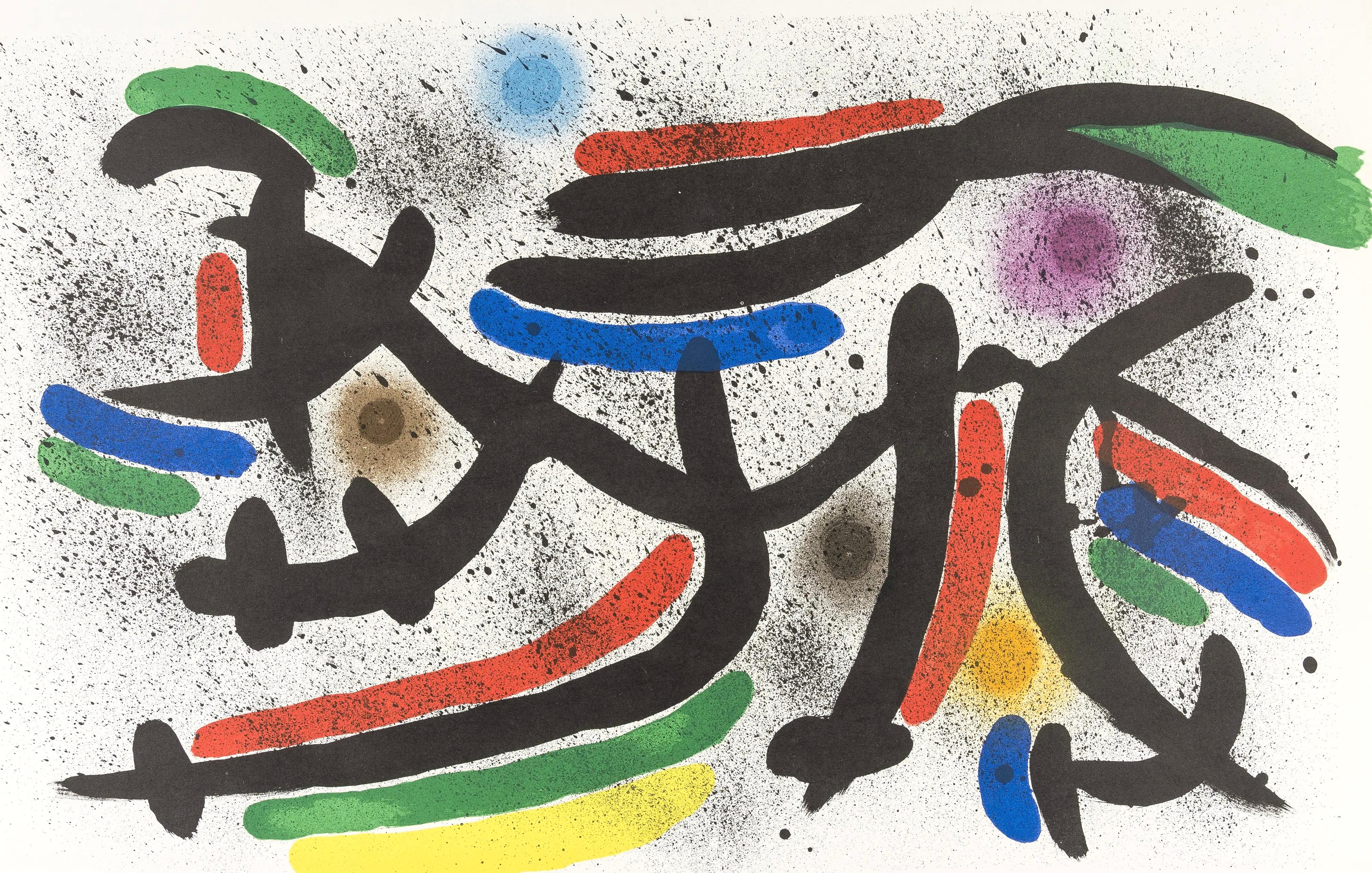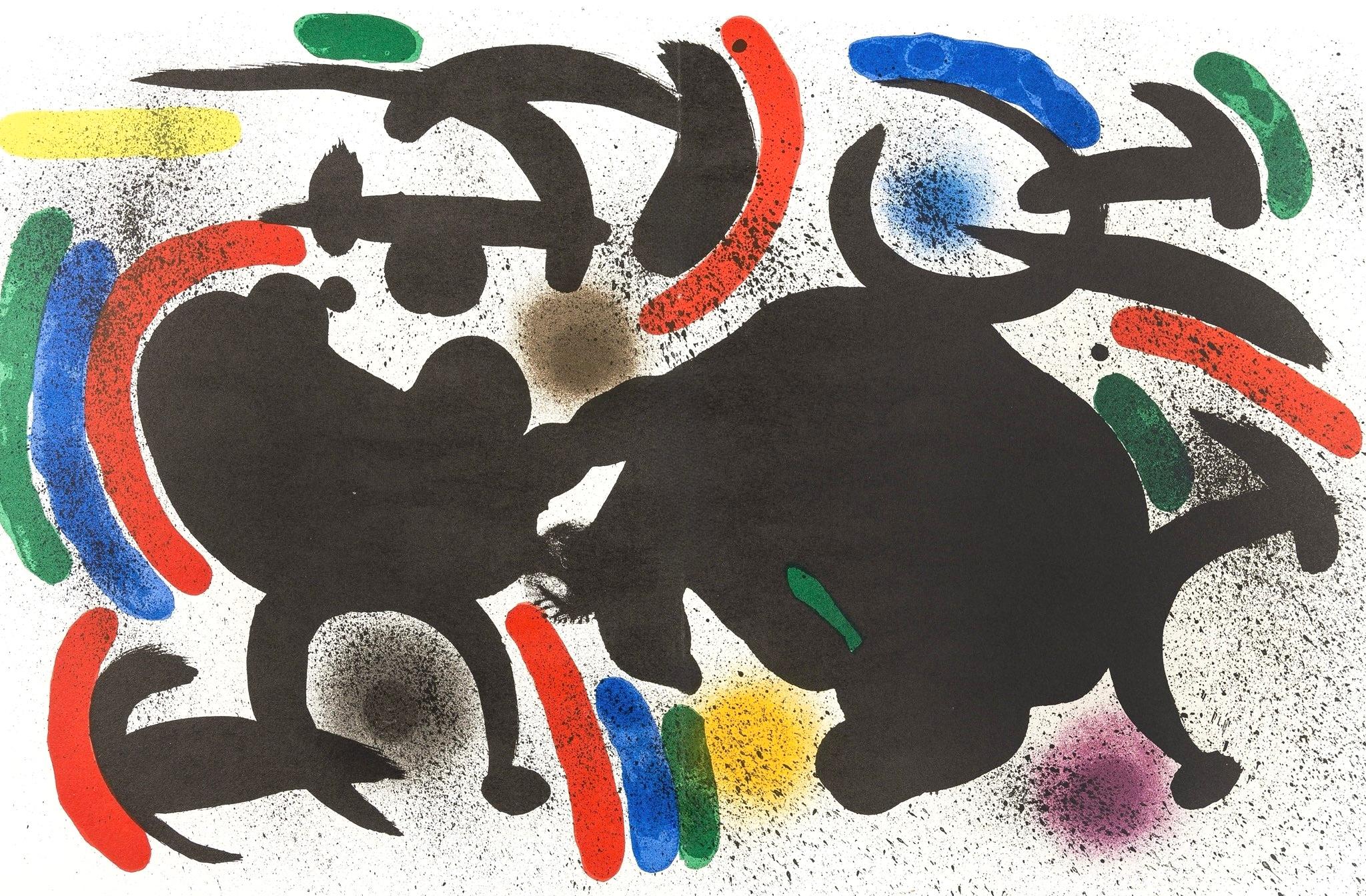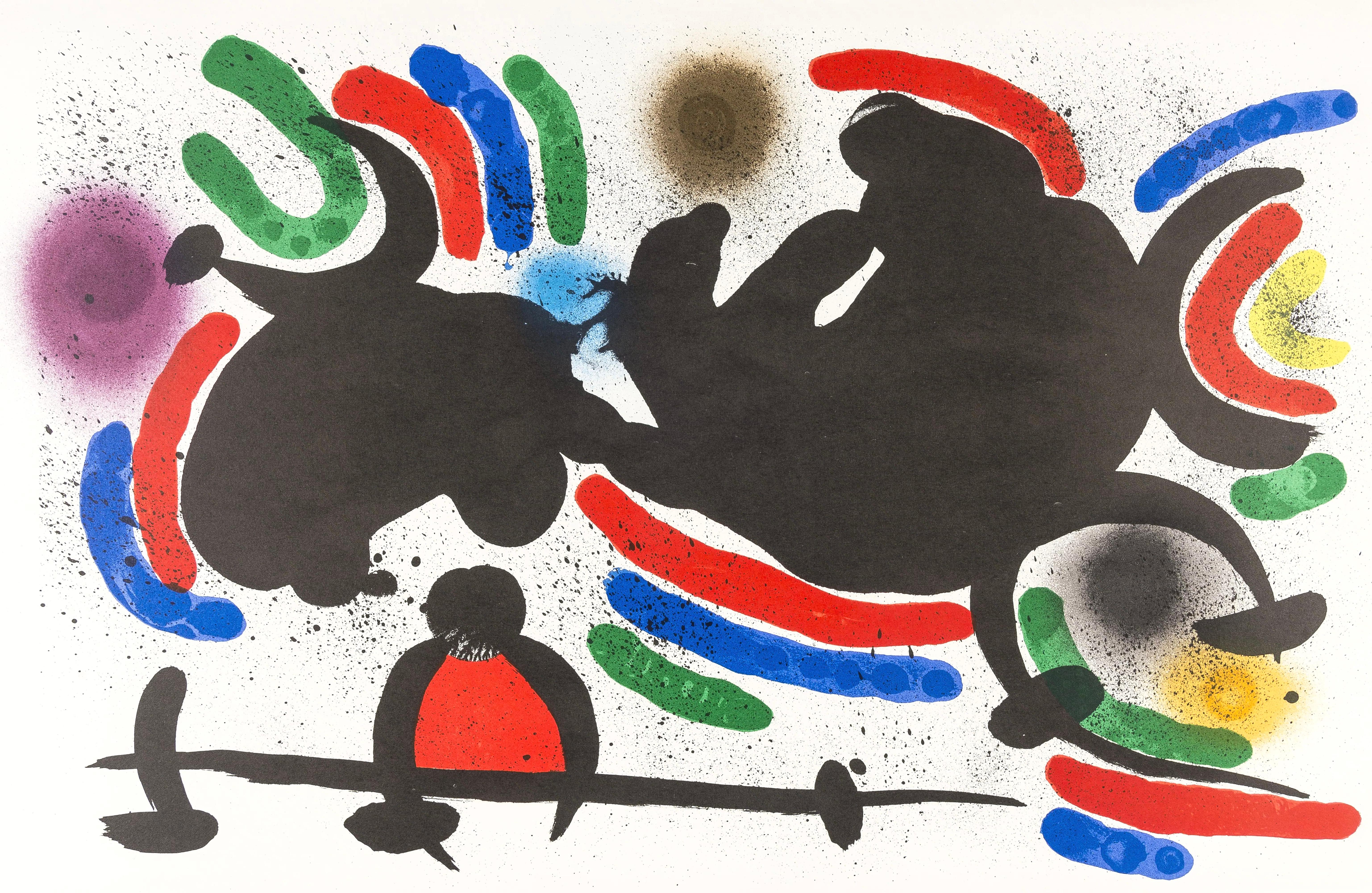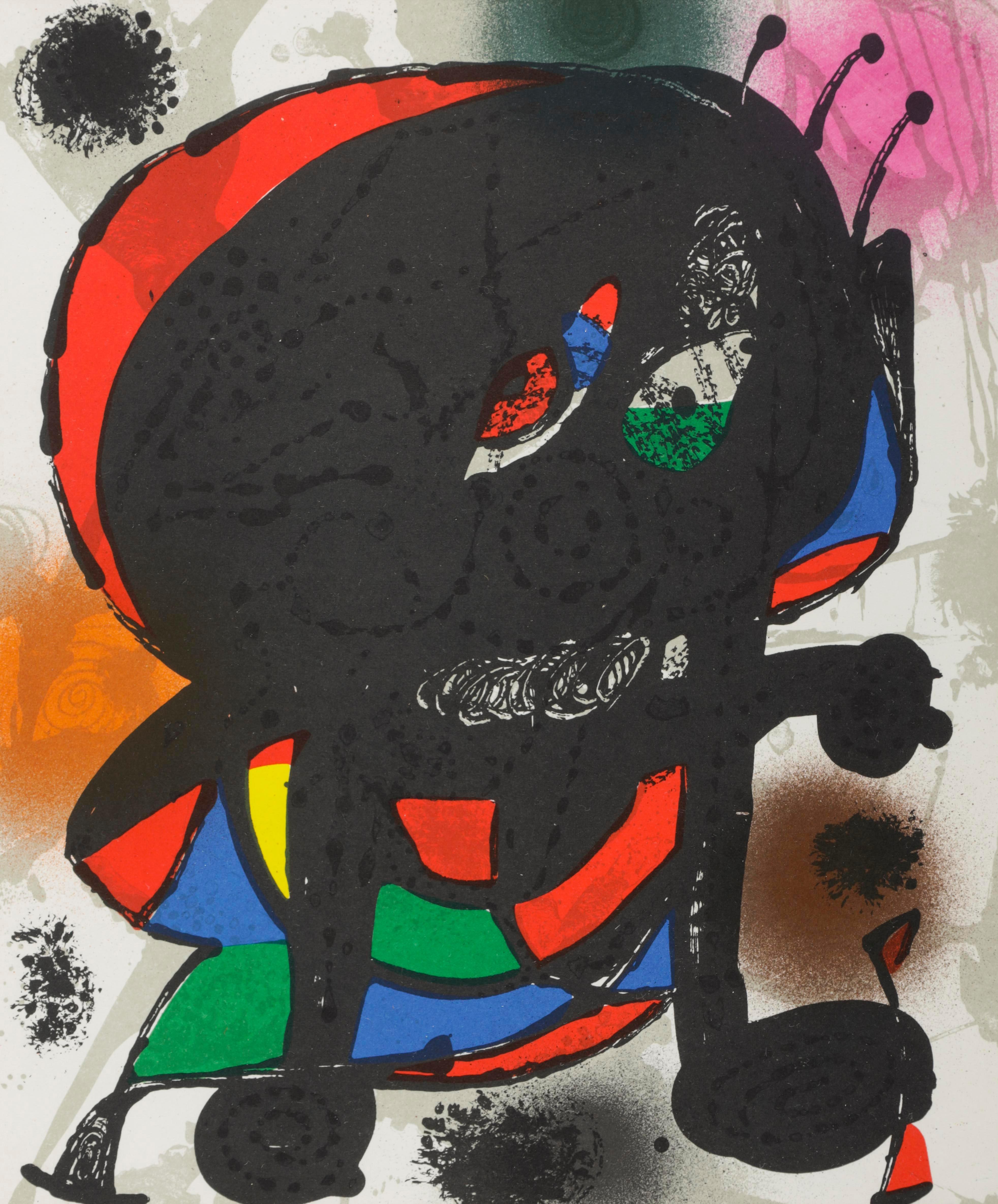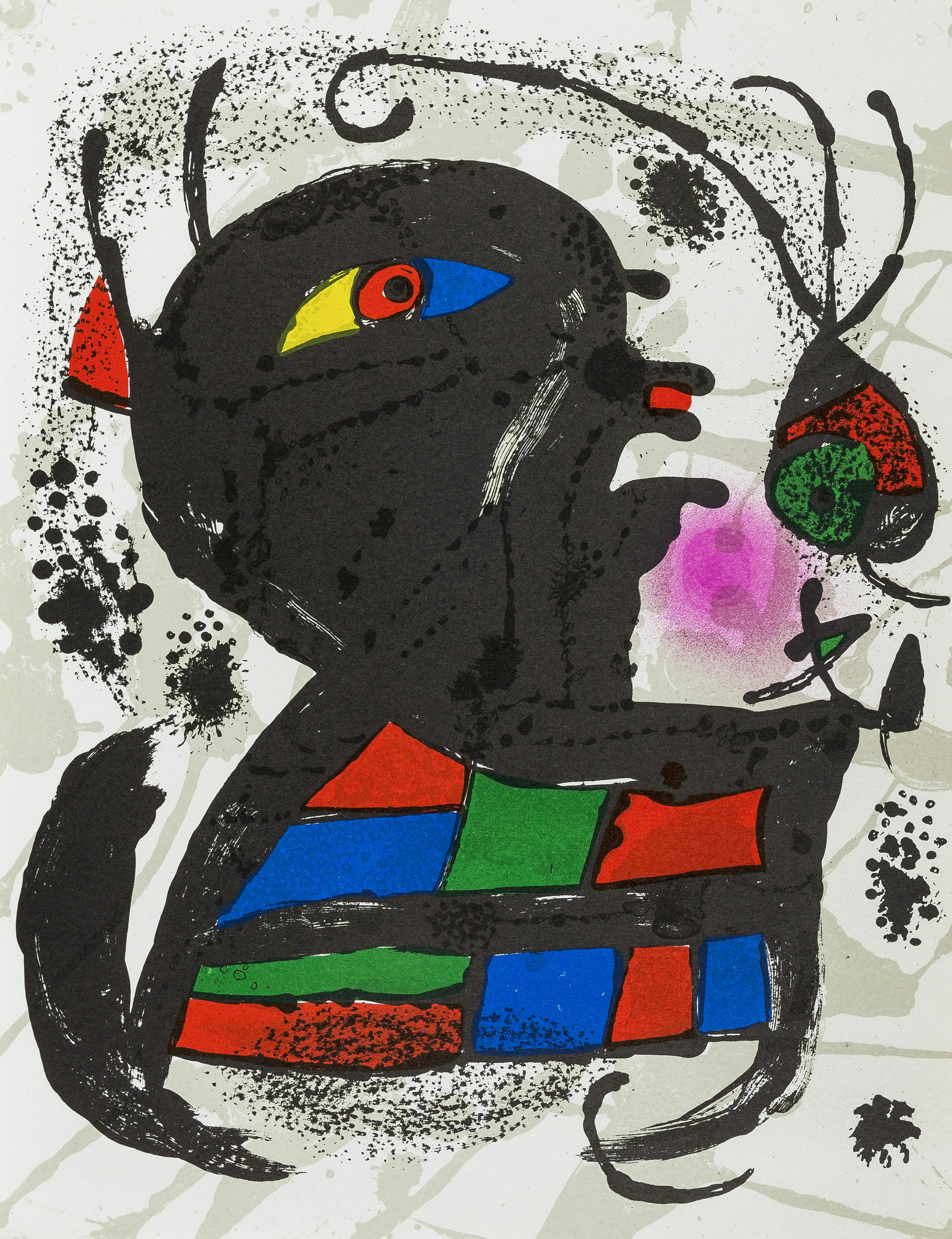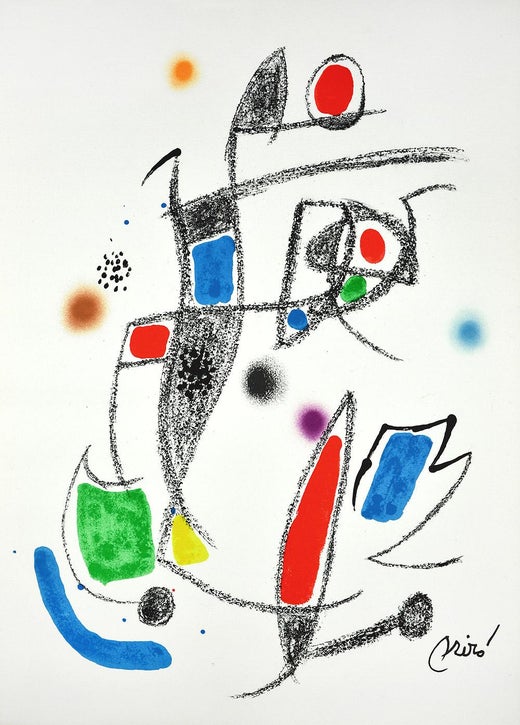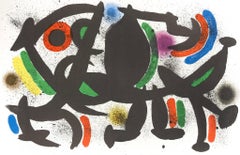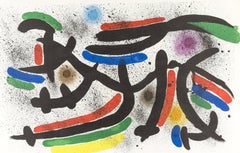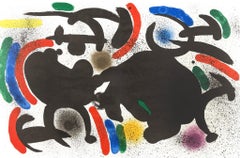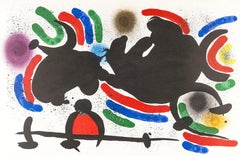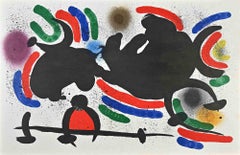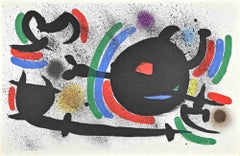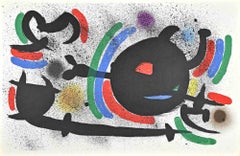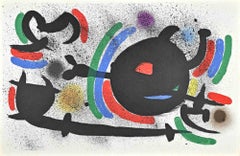This exquisite lithograph by Joan Miro (1893–1983), titled Lithograph X, from the album Joan Miro Lithographs, Volume I, originates from the 1972 edition published by Tudor Publishing Company, New York, and printed by Mourlot Freres, Paris, 1972. Lithograph X reflects Miros poetic mastery of line, movement, and color, capturing his lifelong pursuit of visual rhythm and lyrical abstraction. Combining spontaneity and control, this composition embodies Miros signature balance of playful geometry and poetic energy—translating instinct and imagination into a harmonious field of motion and light.
Executed as a lithograph on velin paper, this work measures 12.5 x 20 inches, with centerfold as issued. Unsigned and unnumbered as issued. The edition exemplifies the refined craftsmanship and technical mastery of Mourlot Freres, Paris, one of the foremost printmaking ateliers of the 20th century.
Artwork Details:
Artist: Joan Miro (1893–1983)
Title: Lithograph X, from the album Joan Miro Lithographs, Volume I, 1972
Medium: Lithograph on velin paper
Dimensions: 12.5 x 20 inches (31.8 x 50.8 cm), with centerfold as issued
Inscription: Unsigned and unnumbered as issued
Date: 1972
Publisher: Tudor Publishing Company, New York
Printer: Mourlot Freres, Paris
Catalogue raisonne references: Cramer, Patrick, and Joan Miro. Joan Miro, Catalogue Raisonne Des Livres Illustres. P. Cramer, 1989, illustration 160. Calas, Nicolas, and Elena Calas. Joan Miro: Lithographs Volume IV 1969-1972. Maeght, 1981, illustration 866.
Condition: Well preserved, consistent with age and medium
Provenance: From the album Joan Miro Lithographs, Volume I, published by Tudor Publishing Company, New York; printed by Mourlot Freres, Paris, 1972
Notes:
Excerpted from the album, The original Joan Miro lithographs were printed by Mourlot, the illustrations by Arte Adrien Maeght, and the text by Imprimerie Union, Paris, France. V̅ examples of this English-language edition, numbered I-V̅, have been printed. A deluxe French edition of CL examples, numbered I-CL, with II additional original lithographs signed by Joan Miro, and LXXX suites, numbered I-LXXX, containing the XIII original lithographs on velin with wide margins and with each lithograph signed by the artist, have also been printed.
About the Publication:
Joan Miro Lithographs, Volume I, published in 1972 by Tudor Publishing Company, New York, in collaboration with Mourlot Freres, Paris, inaugurated the definitive four-volume catalogue series devoted to Miros original lithographs. This landmark publication was conceived as both a scholarly reference and a visual celebration of the artist’s printmaking achievements, uniting essays, documentation, and full-color lithographic plates printed from the original stones. The English-language edition, produced for international distribution, was printed to the same technical standards as the French deluxe edition issued by Maeght Editeur, ensuring identical quality and fidelity. The lithographs, executed at the Atelier Mourlot—Europe’s most renowned lithographic studio—reflect the seamless collaboration between Miro and printer Fernand Mourlot, whose partnership had defined the highest standards of fine art lithography since the 1930s. The album embodies Miros philosophy of printmaking as a form of spontaneous creation, translating the energy of his hand directly into color and form. Combining artistic rigor with playful invention, the series captures the essence of Miros late style: joyous, musical, and deeply poetic.
About the Artist:
Joan Miro (1893–1983) was a Catalan painter, sculptor, printmaker, and ceramicist whose visionary imagination and lyrical abstraction made him one of the most influential and beloved artists of the 20th century. Born in Barcelona, Miro drew inspiration from Catalan folk art, Romanesque frescoes, and the luminous landscapes of Mont-roig del Camp, developing a deep connection to nature that infused his work with vitality and symbolism. After formal training at the Escola d'Art in Barcelona, he absorbed the lessons of Post-Impressionism and Cubism before moving to Paris in the early 1920s, where he became a leading figure in the Surrealist movement. There, Miro forged a personal visual language of biomorphic shapes, floating symbols, and radiant color harmonies that reflected both spontaneity and spiritual depth. In creative dialogue with peers such as Alexander Calder, Alberto Giacometti, Salvador Dali, Wassily Kandinsky, Marcel Duchamp, and Man Ray, he helped revolutionize modern art by dissolving the boundaries between abstraction and dream imagery. Miros inventive approach extended far beyond painting, embracing sculpture, ceramics, and monumental public commissions that redefined how art could interact with space and emotion. His expressive freedom and gestural abstraction profoundly influenced later artists including Jackson Pollock, Mark Rothko, Alexander Calder, Jean Dubuffet, Antoni Tapies, and Joan Mitchell, inspiring generations who sought to merge instinct, color, and imagination. Today, Miros work remains a cornerstone of modernism, prized by collectors and celebrated in major museums worldwide. His highest auction record was achieved by Peinture (Etoile Bleue) (1927), which sold for 23,561,250 GBP (approximately 37 million USD) at Sotheby's, London, on June 19, 2012.
Joan Miro Lithograph X, Miro Lithographs Volume I, Miro Tudor Publishing, Miro Mourlot Paris, Miro lithograph velin, Miro collectible print.

